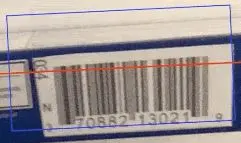cefaclor 500 mg
INDICATIONS AND USAGE Cefaclor is indicated in the treatment of the following infections when caused by susceptible strains of the designated microorganisms: Otitis media caused by Streptococcus pneumoniae, Haemophilus influenzae, staphylococci, and Streptococcus pyogenes Note: β-lactamase-negative, ampicillin-resistant (BLNAR) strains of Haemophilus influenzae should be considered resistant to cefaclor despite apparent in vitro susceptibility of some BLNAR strains. Lower respiratory tract infections, including pneumonia, caused by Streptococcus pneumoniae, Haemophilus influenzae, and Streptococcus pyogenes Note: β-lactamase-negative, ampicillin-resistant (BLNAR) strains of Haemophilus influenzae should be considered resistant to cefaclor despite apparent in vitro susceptibility of some BLNAR strains. Pharyngitis and Tonsillitis, caused by Streptococcus pyogenes Note: Penicillin is the usual drug of choice in the treatment and prevention of streptococcal infections, including the prophylaxis of rheumatic fever. Cefaclor is generally effective in the eradication of streptococci from the nasopharynx; however, substantial data establishing the efficacy of cefaclor in the subsequent prevention of rheumatic fever are not available at present. Urinary tract infections, including pyelonephritis and cystitis, caused by Escherichia coli, Proteus mirabilis, Klebsiella spp ., and coagulase-negative staphylococci Skin and skin structure infections caused by Staphylococcus aureus and Streptococcus pyogenes Appropriate culture and susceptibility studies should be performed to determine susceptibility of the causative organism to cefaclor. To reduce the development of drug-resistant bacteria and maintain the effectiveness of Cefaclor Capsule and other antibacterial drugs, Cefaclor Capsule should be used only to treat or prevent infections that are proven or strongly suspected to be caused by susceptible bacteria. When culture and susceptibility information are available, they should be considered in selecting or modifying antibacterial therapy. In the absence of such data, local epidemiology and susceptibility patterns may contribute to the empiric selection of therapy.
Carlsbad Technology, Inc.
DISCLAIMER:
"This tool does not provide medical advice, and is for informational and educational purposes only, and is not a substitute for professional medical advice, treatment or diagnosis. Call your doctor to receive medical advice. If you think you may have a medical emergency, please dial 911."
"Do not rely on openFDA to make decisions regarding medical care. While we make every effort to ensure that data is accurate, you should assume all results are unvalidated. We may limit or otherwise restrict your access to the API in line with our Terms of Service."
"This product uses publicly available data from the U.S. National Library of Medicine (NLM), National Institutes of Health, Department of Health and Human Services; NLM is not responsible for the product and does not endorse or recommend this or any other product."
PillSync may earn a commission via links on our site





HOW SUPPLIED
CEFACLOR capsule USP 250 mg (blue cap and pink body hard gelatin capsule containing white to slightly yellowish powder imprinted with âKRCâ on both capsule cap and capsule body) contains
CEFACLOR USP (monohydrate) equivalent to 250 mg anhydrous
CEFACLOR. Bottle of 30 NDC 61442-171-30 Bottle of 100 NDC 61442-171-01 Bottle of 500 NDC 61442-171-05
CEFACLOR capsule USP 500 mg (blue cap and orange body hard gelatin capsule containing white to slightly yellowish powder imprinted with âKRC500â on both capsule cap and capsule body) contains
CEFACLOR USP (monohydrate) equivalent to 500 mg anhydrous
CEFACLOR. Bottle of 30 NDC 61442-172-30 Bottle of 100 NDC 61442-172-01 Bottle of 500 NDC 61442-172-05 Store at 20â - 25â (68â to 77â) [See USP Controlled Room Temperature].
More pills like CAPSULE KRC500